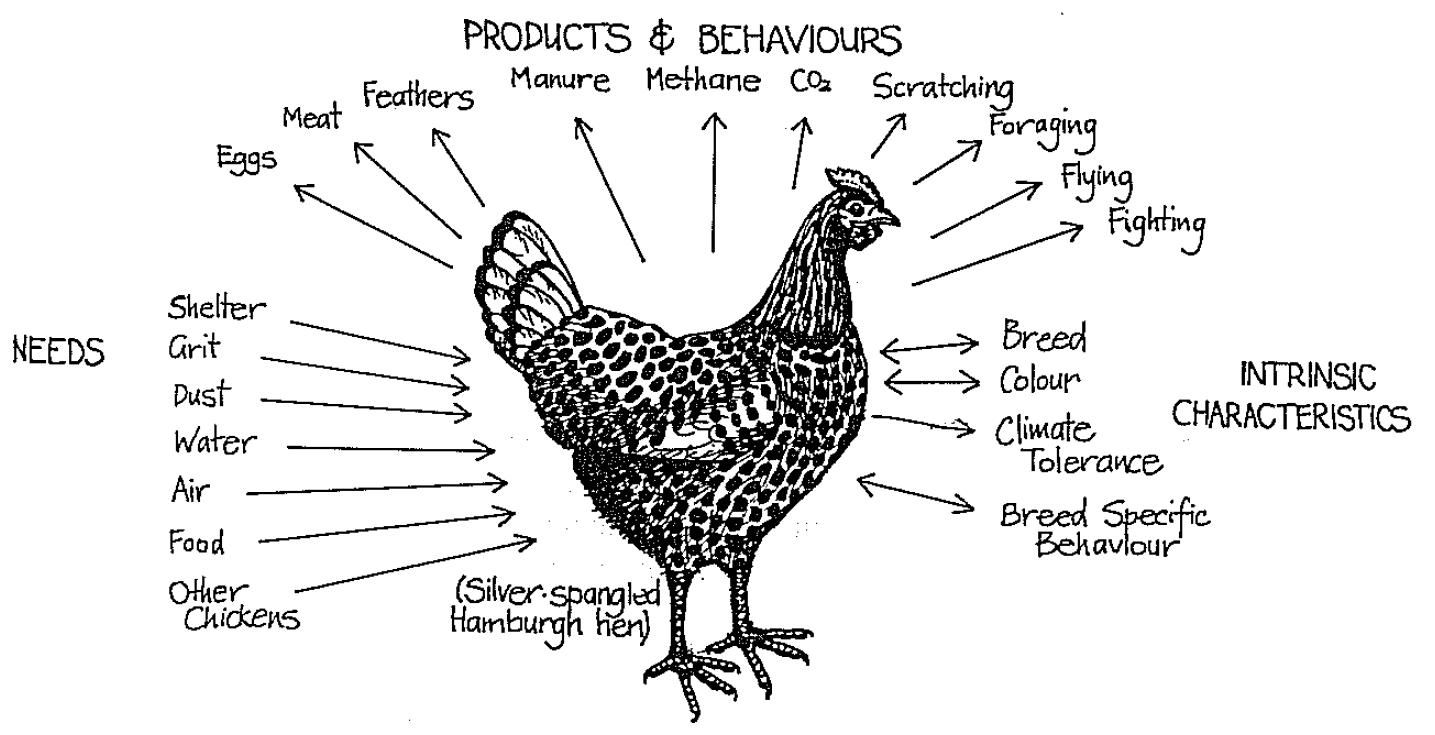What is Permaculture?

We’ve written before about Permaculture Principles, and the video above is a great intro, but what exactly is Permaculture anyway?
Wikipedia says:
“Permaculture is an approach to designing human settlements and agricultural systems that are modelled on the relationships found in natural ecologies.”
https://en.wikipedia.org/wiki/Permaculture
The Permaculture Association says on its homepage:
“Permaculture works with nature to make a better world for all. By observing the natural world we can see a set of principles at work. Permaculture design uses these principles to develop integrated systems that provide for our needs of food, shelter, energy and community in ways that are healthy and efficient. We can use permaculture design methods to improve the quality and productivity of our individual lives, our society and our environment.”
https://permaculture.org.uk/
on their What is Permaculture? page it has:
“Permaculture combines three key aspects:
1. an ethical framework
2. understandings of how nature works, and
3. a design approachThis unique combination is then used to support the creation of sustainable, agriculturally productive, non-polluting and healthy settlements. In many places this means adapting our existing settlements. In other cases it can mean starting from scratch. Both offer interesting challenges and opportunities.
The word ‘permaculture’ comes from ‘permanent agriculture’ and ‘permanent culture’ – it is about living lightly on the planet, and making sure that we can sustain human activities for many generations to come, in harmony with nature. Permanence is not about everything staying the same. Its about stability, about deepening soils and cleaner water, thriving communities in self-reliant regions, biodiverse agriculture and social justice, peace and abundance.”
https://permaculture.org.uk/knowledge-base/basics
On the Permaculture Research Insitute of Australia (and US) site it says:
“Permaculture (permanent agriculture) is the conscious design and maintenance of agriculturally productive ecosystems which have the diversity, stability, and resilience of natural ecosystems. It is the harmonious integration of landscape and people — providing their food, energy, shelter, and other material and non-material needs in a sustainable way. Without permanent agriculture there is no possibility of a stable social order.
“Permaculture design is a system of assembling conceptual, material, and strategic components in a pattern which functions to benefit life in all its forms.
“The philosophy behind permaculture is one of working with, rather than against, nature; of protracted and thoughtful observation rather than protracted and thoughtless action; of looking at systems in all their functions, rather than asking only one yield of them; and allowing systems to demonstrate their own evolutions.”
https://permaculture.org.au/what-is-permaculture/
Co-founder of Permaculture David Holmgren says:
“permaculture is ‘Consciously designed landscapes which mimic the patterns and relationships found in nature, while yielding an abundance of food, fibre and energy for provision of local needs.’ ”
https://www.holmgren.com.au/DLFiles/PDFs/Essence_of_PC_eBook.pdf
On the back of Patrick Whitefield‘s “Permaculture in a Nutshell” it says:
“Permaculture is a creative approach to abundant and fulfilling lifestyles. It is for everyone wishing to live sustainably and tread more lightly on the Earth.
“Permaculture is an ecologically sound approach to providing for our needs, including our food, shelter and social structures. Is is based on co-operating with nature and caring for the Earth and its people.”
In Patrick Whitefields’ “Earth Care Manual” it says:
“Permaculture means different things to different people, but at root it means taking natural ecosystems as the model for our own human habitats. Natural ecosystems are, almost by definition, sustainable, and if we can understand the way they work we can use that understanding to make our own lives more sustainable.”
In the intro to Graham Burnett‘s “Permaculture: A beginners’ guide” it quotes Bill Mollison as saying:
“Permaculture offers a radical approach to food production and urban renewal, water, energy and pollution. It integrates ecology, landscape, organic gardening, architecture and agro-forestry in creating a rich and sustainable way of living. It uses appropriate technology giving high yields for low energy inputs, achieving a resource of great diversity and stability. The design principles are equally applicable to both urban and rural dwellers”
https://files.uniteddiversity.com/Permaculture/permaculture_beginners_guide.pdf
And also adds:
“‘PERMACULTURE’ is a word that was originally coined in the mid seventies by two Australians, David Holmgren and Bill Mollison, to describe the design system pioneered as a response to what they, and many others globally, saw as serious challenges to the survival of all of us. Originally derived from the words ‘PERMAnent agriCULTURE’, permaculture has gone beyond it’s roots in looking at strategies to create sustainable food growing methods to become a worldwide movement encompassing all aspects of how we as human beings can live harmoniously in relation to our Earth and it’s finite resources- A PERManent CULTURE. Permaculture now probably has as many defintions as there are practitioners, but one that is particularly useful might be- “CREATING SUSTAINABLE HUMAN HABITATS BY FOLLOWING NATURE’S PATTERNS””
https://files.uniteddiversity.com/Permaculture/permaculture_beginners_guide.pdf
In Toby Hemenway‘s “Gaia’s Garden” he says:
“If we think of practices like organic gardening, recycling, natural building, renewable energy, and even consensus decision-making and social-justice efforts as tools for sustainability, then permaculture is the toolbox that helps us organize and decide when and how to use those tools. Permaculture is not a discipline in itself but rather a design approach based on connecting different disciplines, strategies, and techniques.”
On the Scott Pittman’s Permaculture Institute page it says:
“Permaculture is an ecological design system for sustainability in all aspects of human endeavor. It teaches us how build natural homes, grow our own food, restore diminished landscapes and ecosystems, catch rainwater, build communities and much more.”
So, hope that is all clear for you now! 🙂
If not, be sure to check out our post about Permaculture Principles and for LOTS MORE INFO have a look in in the Permaculture folder of our Tools for Change online library 🙂